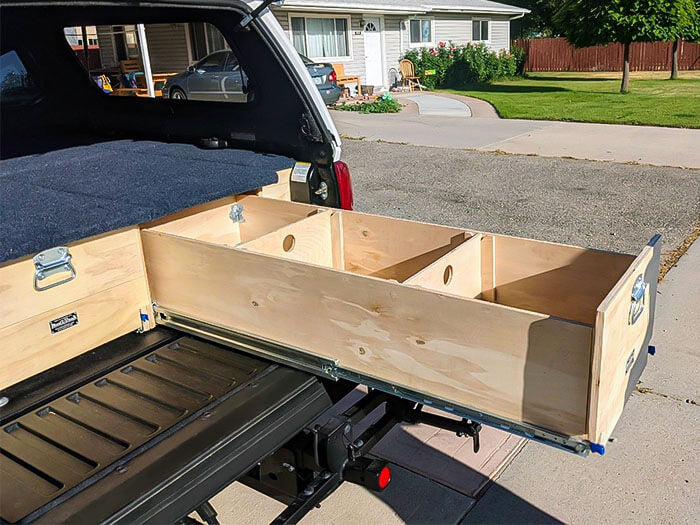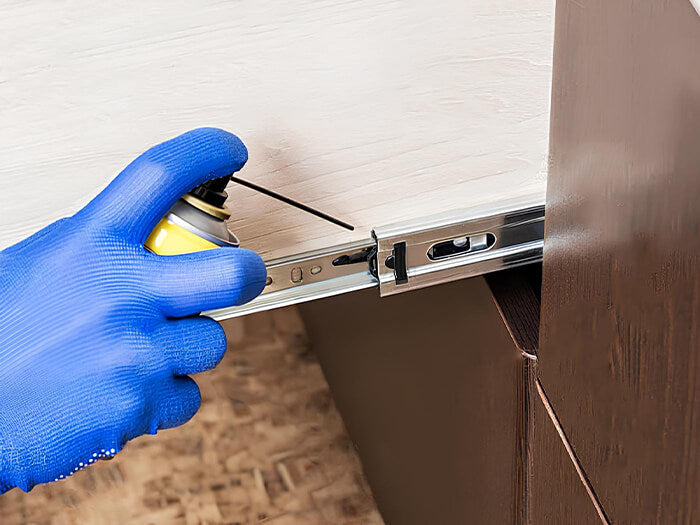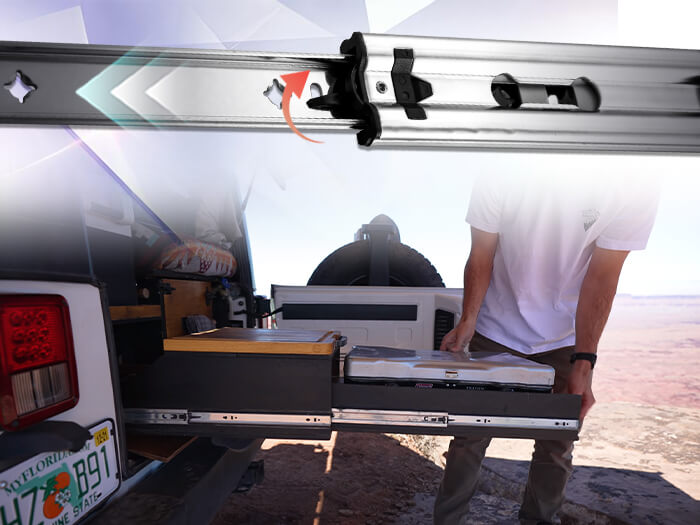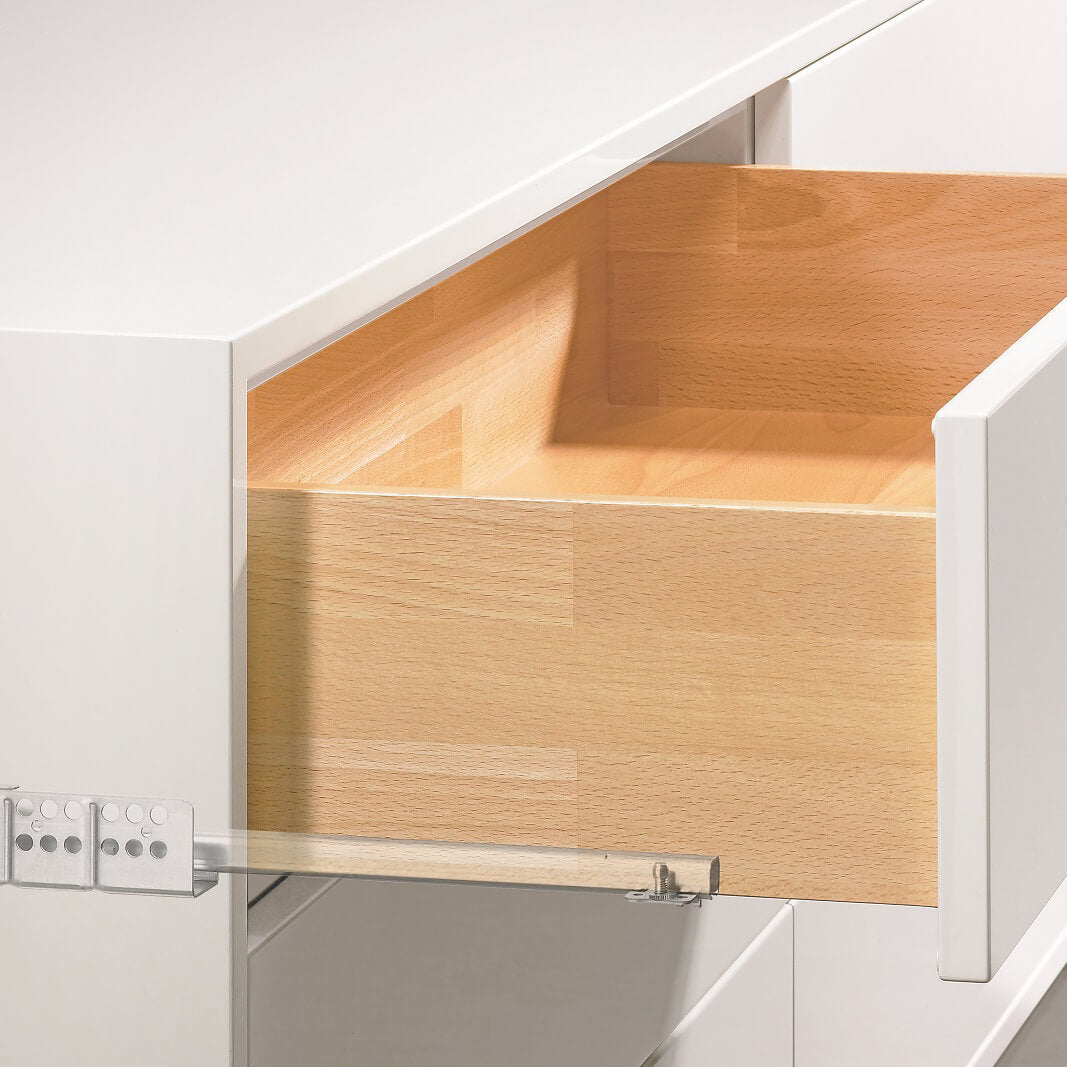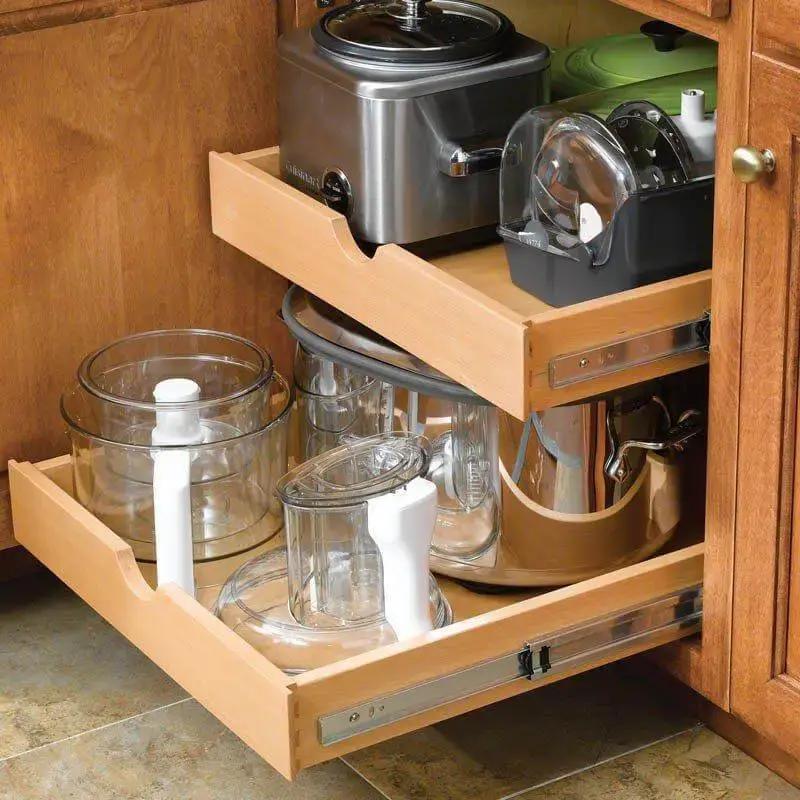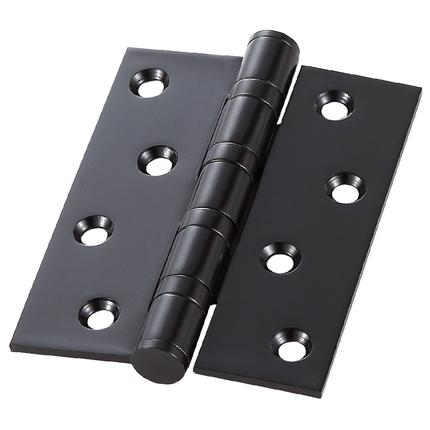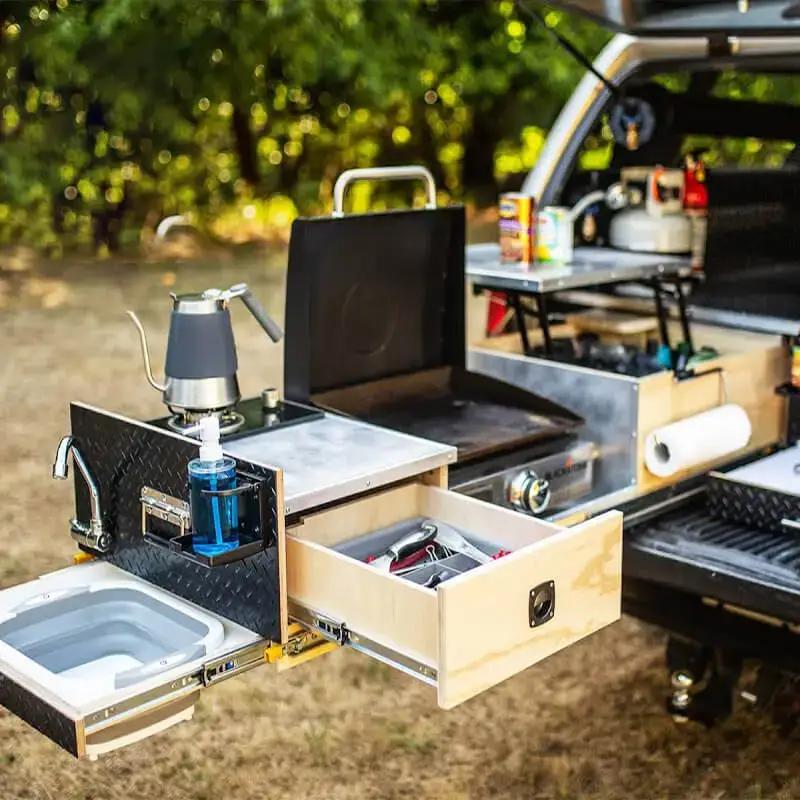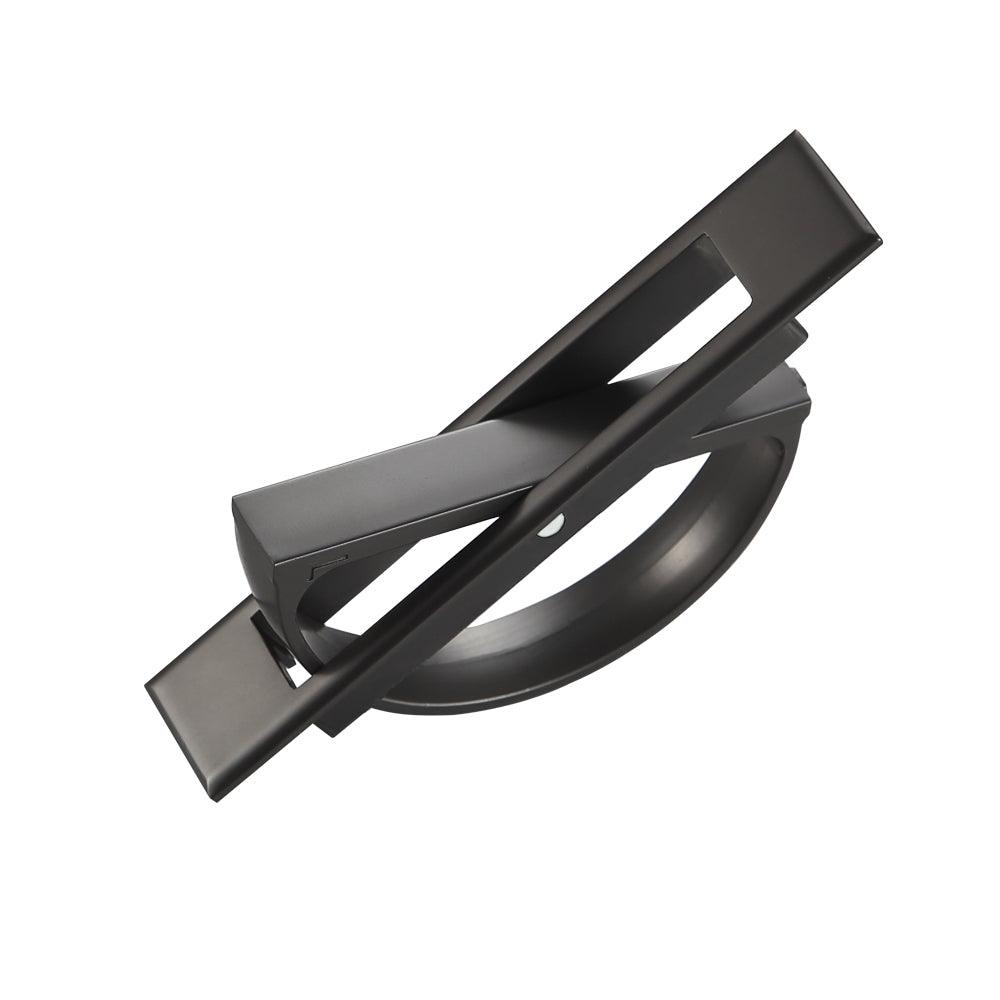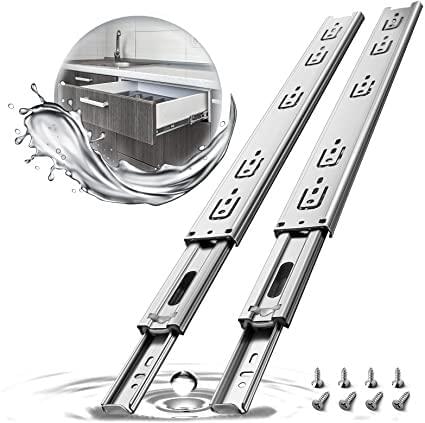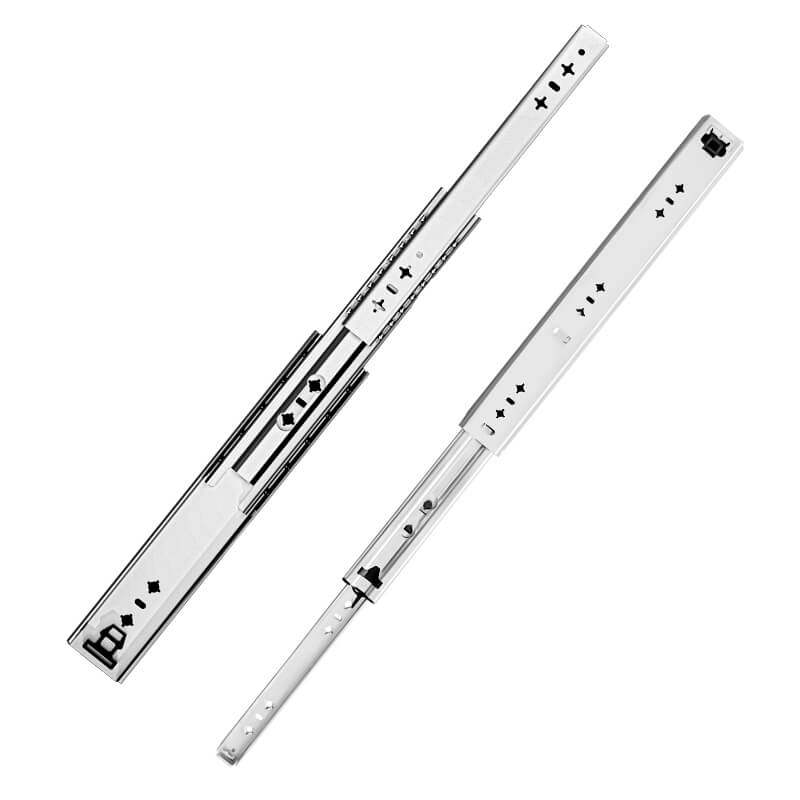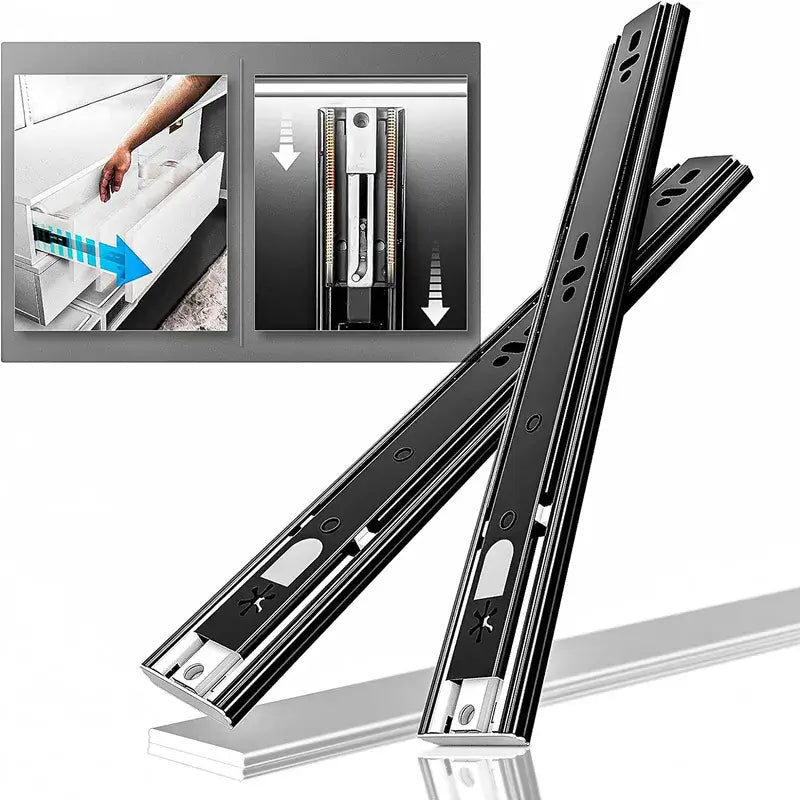In the world of cabinetry and furniture design, locking drawer slides play a pivotal role in both functionality and security. These clever mechanisms allow drawers to smoothly glide in and out while also locking securely in place when needed. Whether you're a DIY enthusiast or a professional woodworker, understanding how to release locking drawer slides is essential knowledge.
In this comprehensive guide, we'll delve into the intricate world of locking drawer slides, demystifying their mechanisms and shedding light on the crucial steps to release them effortlessly. We'll explore the various types of locking mechanisms, discuss the reasons behind their widespread use, and provide you with a step-by-step walkthrough for releasing these ingenious hardware components.
Moreover, we'll offer valuable tips for maintaining your locking drawer slides, ensuring they continue to function smoothly over the years. And should you encounter any hiccups along the way, fear not, as we'll also troubleshoot common issues that may arise with locking drawer slides.
So, whether you're embarking on a new DIY project or simply want to enhance your knowledge of cabinetry hardware, let's embark on this journey to unlock the secrets of locking drawer slides and empower you to handle them with confidence.
Understanding Locking Drawer Slides

What are Locking Drawer Slides?
Locking drawer slides are a crucial component in modern cabinetry and furniture design. They are specially engineered hardware that enables drawers to move smoothly in and out of their housing while providing the added functionality of secure locking when needed. Understanding the fundamentals of locking drawer slides is the first step toward mastering their operation.
Types of Locking Mechanisms
Locking drawer slides come in several variations, each employing a unique locking mechanism. These mechanisms include:
Ball-Bearing Locks: These slides utilize ball bearings and a detent mechanism to keep the drawer securely in place. The detent mechanism creates resistance when you attempt to open the drawer, preventing unintentional movement.
Friction Locks: Friction locking slides rely on friction to keep the drawer stationary. A spring-loaded component creates friction against the drawer slides, requiring additional force to open it.
Detent Locks: Detent locking drawer slides have small notches or "detents" along the slide's length. These notches hold the drawer in place until sufficient force is applied to overcome them.
Common Applications
Locking drawer slides find application in various settings and scenarios, thanks to their versatility and utility. Some common uses include:
Office Furniture: Locking mechanisms in office desks and filing cabinets provide security for confidential documents.
Kitchen Cabinets: Locking slides in kitchen cabinets ensure drawers remain shut during transportation or in case of accidental bumps.
Tool Chests: Toolboxes often incorporate locking slides to prevent drawers from opening unexpectedly and spilling their contents.
Medical Carts: In healthcare settings, locking slides secure important medical equipment and supplies.
RVs and Campers: Locking drawer slides are essential in recreational vehicles to keep drawers in place during travel.
Understanding the various types of locking mechanisms and their applications will help you choose the right slides for your specific needs and navigate their functionality effectively. Now that we've explored the basics of locking drawer slides, let's delve deeper into why they are widely used and the benefits they offer.
Why Locking Drawer Slides Are Used
Locking drawer slides are not just a convenient feature; they serve a multitude of purposes, making them a crucial element in modern cabinetry and furniture design. Here, we'll delve into the reasons behind the widespread use of locking drawer slides and the benefits they bring to various applications.
Enhanced Security
One of the primary reasons for using locking drawer slides is security. Whether in an office, kitchen, or tool chest, securing valuable items or confidential documents is essential. Locking slides provide an extra layer of protection by keeping drawers firmly closed and locked in place. This deters unauthorized access and prevents accidental spills or exposure of sensitive content.
Safety and Stability
Locking drawer slides contribute significantly to safety and stability in various environments. They ensure that drawers stay closed during transportation or when subjected to sudden movements or vibrations. This is particularly important in mobile applications such as RVs and campers, where drawers need to remain shut while on the road.
Organization and Efficiency
In settings like office furniture and tool chests, organization is key. Locking slides help maintain order by preventing drawers from unintentionally opening and mixing contents. This saves time and frustration when searching for specific items and enhances overall efficiency.
Child Safety
In homes with young children, locking drawer slides play a crucial role in childproofing. They prevent curious little ones from accessing potentially hazardous items or materials stored in drawers, offering peace of mind to parents and caregivers.
Flexibility in Design
Locking drawer slides also provide flexibility in design. Furniture designers and manufacturers can incorporate these slides into various types of furniture, from desks to nightstands, without compromising on security or aesthetics. This adaptability allows for creative and functional solutions in interior design.
Versatility in Commercial Settings
In commercial and industrial environments, locking drawer slides are indispensable. They keep tools, equipment, and supplies securely stored, preventing damage and ensuring that everything is readily accessible when needed. This is particularly crucial in professions where time is of the essence, such as in medical settings or automotive repair shops.
Increased Functionality
Locking drawer slides offer an additional layer of functionality to furniture and cabinets. They allow users to transform ordinary drawers into secure storage units, making them suitable for a wide range of applications.
Understanding why locking drawer slides are used underscores their significance in various settings. Whether you're aiming to enhance security, promote safety, improve organization, or add functionality to your furniture or cabinets, these slides are a valuable asset. Now that we've explored the reasons for their widespread use, let's move on to the practical aspect of how to release locking drawer slides when the need arises.
Tips for Smooth Operation of Locking Drawer Slides

Locking drawer slides, while incredibly useful, can sometimes pose challenges if not properly maintained. To ensure their smooth operation and longevity, consider the following tips:
Regular Maintenance
Cleaning: Keep the slides clean by removing dust, dirt, and debris regularly. Use a soft brush or compressed air to clean out any particles that may interfere with the sliding mechanism.
Lubrication: Apply a suitable lubricant to the slides to reduce friction and ensure smooth movement. Be sure to use a lubricant recommended by the manufacturer to prevent damage.
Inspection: Periodically inspect the slides for signs of wear, damage, or misalignment. Address any issues promptly to prevent further damage and maintain smooth operation.
Avoid Overloading
Weight Capacity: Respect the weight capacity of the locking drawer slides. Overloading can strain the slides and make them difficult to open or close. Check the manufacturer's specifications for weight limits.
Even Distribution: Distribute the weight evenly within the drawer to prevent uneven wear on the slides. Avoid placing heavy items on one side of the drawer.
Organize Smartly: Use dividers or organizers within the drawer to prevent items from shifting during movement. This can help distribute weight more evenly.
Use Proper Technique
Smooth and Steady: When opening or closing the drawer, use a smooth and steady motion. Avoid jerky movements, as they can put unnecessary stress on the locking mechanism.
Engage the Lock: Ensure that the locking mechanism is fully engaged when the drawer is in the closed position. This prevents accidental openings and helps maintain alignment.
Seek Professional Help if Needed
Repairs: If you notice any significant issues, such as broken components or severe misalignment, consider seeking professional help for repairs or replacements. Attempting to fix complex problems on your own can lead to further damage.
Upgrade if Necessary: If your locking drawer slides are outdated or no longer function properly, consider upgrading to newer, more efficient models. Newer slides may offer improved features and durability.
By following these tips, you can ensure that your locking drawer slides remain in optimal condition, providing you with the security and convenience you rely on. Remember that proper maintenance not only enhances the functionality of the slides but also extends their lifespan, saving you time and money in the long run. Now that you know how to keep your locking drawer slides in top shape, let's move on to the essential skill of releasing them when needed.
Drawer Not Locking Properly
Drawer Not Locking Properly: Troubleshooting and Solutions
Locking drawer slides are designed to provide security and stability, but occasionally, they may fail to lock as intended. In this section, we'll explore common causes of locking failure and provide practical solutions to ensure your drawer locks properly.
Causes of Locking Failure
Obstructions: Check for any obstructions or debris in the slide mechanism that may prevent the locking mechanism from engaging fully.
Misalignment: Misaligned slides can prevent the locking components from properly engaging. Ensure that the slides are properly aligned and adjusted.
Wear and Tear: Over time, locking drawer slides may experience wear and tear. Components such as detents, levers, or springs can degrade, affecting their ability to lock securely.
Excessive Weight: Exceeding the weight capacity of the slides can strain the locking mechanism, causing it to fail. Ensure you're not overloading the drawer.
Solutions
- Clear Obstructions
Remove Debris: Inspect the slide mechanism and remove any debris, dust, or foreign objects that may be obstructing the locking components.
- Align and Adjust
Check Alignment: Ensure that the slides are properly aligned. Adjust them if necessary to ensure smooth operation.
Tighten Screws: Loose screws can lead to misalignment. Check and tighten all screws and fasteners to secure the slides in place.
- Address Wear and Tear
Inspect Components: Examine the locking components, such as detents, levers, and springs, for signs of wear or damage. Replace any worn-out parts with compatible replacements.
Lubrication: Apply lubricant to movable parts to reduce friction and improve locking performance. Refer to the manufacturer's recommendations for suitable lubricants.
- Manage Weight
Review Weight Limit: Confirm that you're not exceeding the weight capacity of the locking drawer slides. Remove any excess weight and redistribute items if necessary.
Use Dividers: Use dividers or organizers within the drawer to distribute weight evenly, reducing strain on the locking mechanism.
- Professional Assistance
Consult a Professional: If you've tried the above solutions and continue to experience locking issues, consider consulting a professional for a thorough inspection and potential repair or replacement of the locking slides.
By addressing the causes of locking failure and implementing the appropriate solutions, you can restore the functionality of your locking drawer slides and ensure that they lock properly when needed. Proper maintenance and troubleshooting are key to enjoying the security and convenience that locking drawer slides offer in your cabinets and furniture.

Conclusion
In the realm of cabinetry and furniture design, locking drawer slides have proven to be invaluable assets, offering a blend of security, functionality, and convenience. As we wrap up our journey into the world of locking drawer slides, let's recap what we've learned and why it matters.
We began our exploration by understanding the basics, unraveling the intricacies of locking drawer slides, and unveiling the different types of locking mechanisms that power them. From ball-bearing locks to detent locks, we grasped how these mechanisms operate and why they're chosen for various applications.
We then delved into the reasons why locking drawer slides are widely embraced across different industries and settings. From enhancing security to promoting safety, organization, and flexibility in design, we discovered that these slides offer multifaceted advantages that cater to diverse needs.
Our journey didn't stop at understanding; we also delved into the practical side of handling locking drawer slides. We provided a step-by-step guide on how to release them with ease and offered valuable tips for maintaining their smooth operation. Whether you're a seasoned woodworker or a homeowner with locking drawers, this knowledge empowers you to make the most of this essential cabinetry hardware.
Lastly, we tackled the common issue of locking drawer slides not working as intended. Through troubleshooting and practical solutions, we equipped you with the skills to address these challenges, ensuring that your locking drawer slides provide the security and stability they're designed for.
In conclusion, mastering the art of working with locking drawer slides enriches your experience in cabinetry, furniture design, and organization. These versatile hardware components not only keep your belongings secure but also streamline your daily tasks. Remember, whether you're securing confidential documents in an office or keeping your kitchen utensils in check, locking drawer slides are your dependable allies.
As you venture into your next cabinetry project or simply seek to optimize the functionality of your furniture, the knowledge gained here will serve as a valuable resource. With proper care, maintenance, and troubleshooting skills, you can make the most of locking drawer slides, ensuring they serve you well for years to come.
Frequently Asked Questions
How Do Locking Drawer Slides Work?
Locking drawer slides work by using specific mechanisms to secure a drawer in place when it's closed. There are various types of locking mechanisms, including ball-bearing, friction, and detent systems. These mechanisms create resistance or catch points to prevent the drawer from opening unintentionally. To unlock the drawer, you apply force to disengage the mechanism.
What is a Locking Drawer Slide?
A locking drawer slide is a specialized hardware component used in cabinetry and furniture design. It combines smooth drawer movement with a locking mechanism to secure the drawer when closed. This ensures that the contents remain in place. Locking drawer slides are commonly used in settings where security and stability are essential, such as office furniture, kitchen cabinets, and tool chests.


